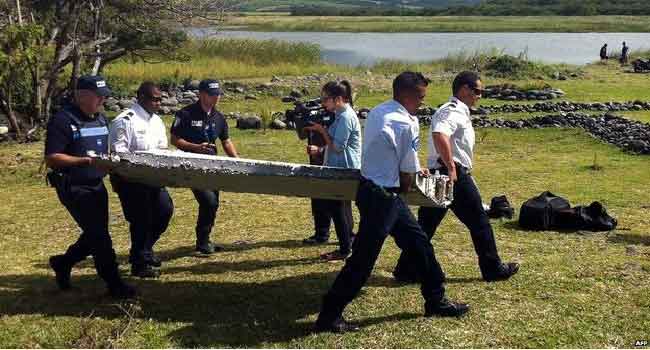 Search for the missing Malaysia Airlines plane has recorded a major breakthrough with the detection of signals consistent with those from “black box” flight recorders.
Search for the missing Malaysia Airlines plane has recorded a major breakthrough with the detection of signals consistent with those from “black box” flight recorders.
An Australian vessel, the Ocean Shield, picked up the signal twice, once for more than two hours.
A retired air chief marshal leading the search, Angus Houston, called it the “most promising lead” so far, but said more information was needed: “We haven’t found the aircraft yet and we need further confirmation”.
Malaysia’s Acting Transport Minister, Hishammuddin Hussein, said he had been briefed by Air Chief Marshal Houston and was “cautiously hopeful that there will be a positive development in the next few days if not hours”.
Two Separate Detections
ACM Houston said the signals were detected using the towed pinger locator deployed on the Ocean Shield.
Two separate detections occurred, he said. The first was held for two hours and 20 minutes before being lost while the second was detected on the return-leg and was held for 13 minutes.
“On this occasion two distinct pinger returns were audible. Significantly this would be consistent with transmissions from both the flight data recorder and the cockpit voice recorder,” ACM Houston said.
“I’m much more optimistic than I was a week ago,” he said.
“We are now in a very well defined search area, which hopefully will eventually yield the information that we need to say that [Malaysia Airlines flight] MH370 might have entered the water just here.”
The Ocean Shield was still in the area, about 1,040 miles (1,680 km) north-west of the Australian city of Perth, but had not been able to reacquire the signals since, he said.
The position of the signals needed to be fixed, ACM Houston said. Once that happened, the Ocean Shield could lower the Bluefin 21 underwater autonomous vehicle to try to locate wreckage on the sea floor.
Batteries Due To Run Out
The signal had been heard in sea with a depth of 4,500m, he added, which was at the limit of the capability of the Bluefin 21.
He cautioned that the next steps would take time.
“It could take some days before the information is available to establish whether these detections can be confirmed as being from MH370,” he said. “In very deep oceanic water, nothing happens fast.”
The search operation is in a race against time as the flight recorders’ batteries are due to run out, meaning a signal would no longer be emitted.
A Chinese search vessel, Haixun 01, also said it briefly heard signals over the weekend in a different search area.
Those signals are now being investigated with the help of a British naval vessel, HMS Echo, which is equipped with sophisticated sound-locating equipment.
Reports said the crew of the Chinese ship had been using a sonar device called a hydrophone to pick up sounds.
Experts said it was technically possible but unlikely that the sounds heard with this equipment related to the missing plane.
Chris Portale, a director of the US company Dukane which makes the device that emits signals from flight recorders, said looking for the Malaysian plane’s “black boxes” was like “looking for a suitcase on the side of a mountain” but under water.
But he said he thought searchers were now in the right area and had a “very good hope” of spotting debris, if the signal was from the aircraft.
“I believe they have got three to four more days of good, solid output [from the flight recorders],” he told the BBC.
The plane, carrying 239 people, was flying from Kuala Lumpur to Beijing on March 8 when it disappeared. Malaysian officials say they believe it crashed in the southern Indian Ocean.





